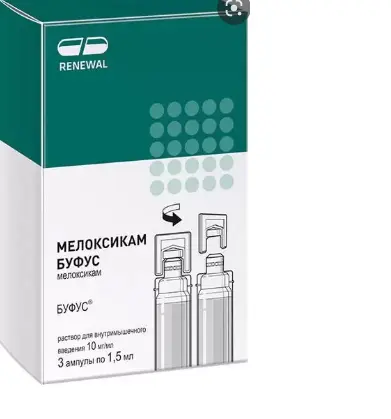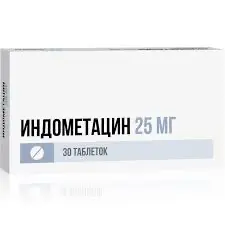Description
Meloxicam-Bufus Pharmacodynamics
Non-steroidal anti-inflammatory drug (NSAID), has anti-inflammatory, antipyretic and analgesic effects. It belongs to the class of oxycams, a derivative of enolic acid. Mechanism of action – inhibition of prostaglandin (Pd) synthesis as a result of selective inhibition of cyclooxygenase 2 (COX-2) enzymatic activity. When prescribed in high doses, prolonged use and individual characteristics of the body COX-2 selectivity decreases. Suppresses prostaglandin (Pd) synthesis in the area of inflammation to a greater extent than in the gastrointestinal mucosa or kidneys, which is due to the relatively selective inhibition of COX-2, whereas inhibition of the ever-present COX-1 isoenzyme may cause gastrointestinal and renal side effects.
Indications
Short-term symptomatic therapy for rheumatoid arthritis, osteoarthritis, ankylosing spondylitis and other joint diseases accompanied by pain syndrome.
Designed to reduce pain and inflammation at the time of use, does not affect the progression of the disease.
Contraindications
– Ulcerative colitis, acute Crohn’s disease; -severe hepatic insufficiency or active liver disease
– severe renal failure (if hemodialysis is not carried out, creatinine clearance less than 30 ml/min, as well as in case of confirmed hyperkalemia), advanced renal disease;
– acute gastrointestinal bleeding, recent cerebrovascular bleeding, or diagnosed clotting disorders;
-Severe uncontrolled heart failure;
– contraindicated in the period following aortocoronary bypass surgery;
– pregnancy;
– Breast-feeding period;
– Children under 18 years of age.
– hypersensitivity to the active substance or excipients (including other nonsteroidal anti-inflammatory drugs (NSAIDs));
– complete or incomplete combination of bronchial asthma, recurrent nasal and paranasal sinus polyposis and intolerance to acetylsalicylic acid and other non-steroidal anti-inflammatory drugs (including history);
– erosive-ulcerative changes of the mucous membrane of the stomach and duodenum, active gastrointestinal bleeding.
Dosage and administration method
- Intramuscular administration of the drug is shown only during the first 2-3 days. Later treatment continues with oral forms (tablets).
- The recommended dose is 7.5 mg or 15 mg once daily, depending on the intensity of pain and severity of the inflammatory process.
- The maximum recommended daily dose is 15 mg. The drug is administered by deep intramuscular injection.
- Given the possible incompatibility, meloxicam should not be mixed in the same syringe with other drugs.
- In patients with increased risk of adverse reactions and with significant renal failure, which are on hemodialysis, the dose should not exceed 7.5 mg per day. No dose adjustment is required for patients with mild to moderate renal impairment (creatinine clearance more than 30 ml/min).
- The drug should not be administered intravenously. Combined use.
- The drug should not be used simultaneously with other NSAIDs.
- The total daily dose of meloxicam used as tablets, suppositories, oral and injections should not exceed 15 mg.





